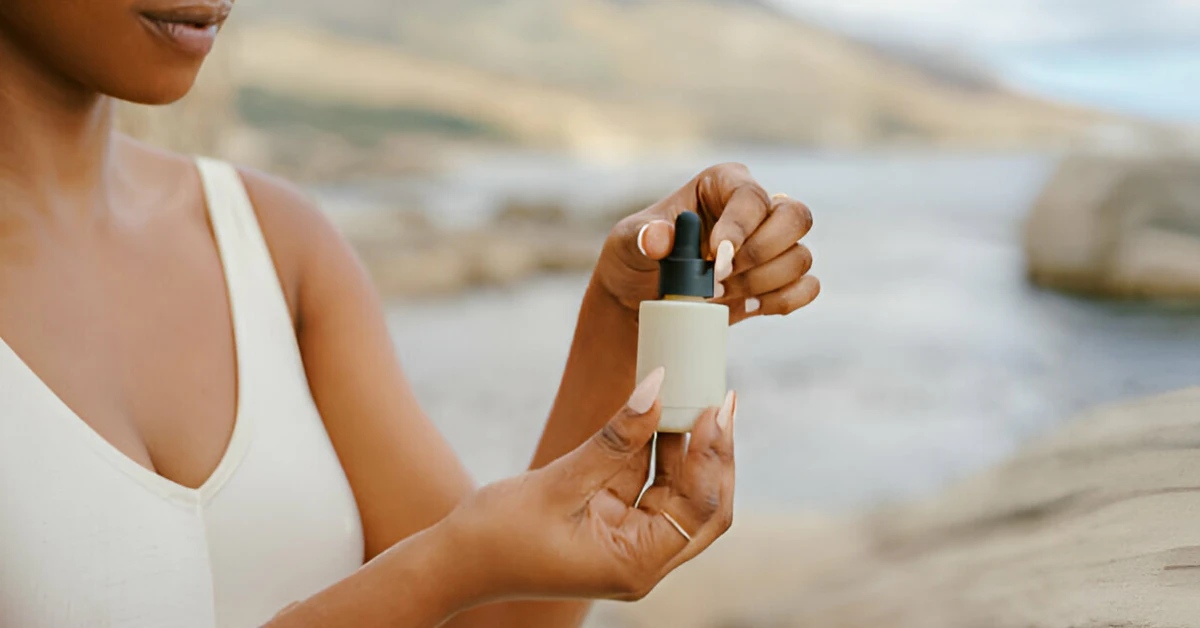Ever felt like your skin was thirsty… but your usual moisturizer just couldn’t cut it? Like a cold drink on a dry winter day, a natural serum for face might be the relief your skin’s been craving. But here’s the tea: “natural” isn’t always foolproof, and not every serum works the same magic. Let’s cut through the clutter (we see you, green-washed marketing) and get real about what makes a face serum a game-changer—and when it might backfire.
I get it. Skincare jargon is rough. You just want your face to feel good, not coin flip whether it’s about to breakout or glow. So here’s the deal: This post breaks down the benefits of face serum alongside real red flags, gives you ingredient cheat codes, and spills tips from brands like Soapstones and Parama Naturals. By the end, you’ll know if a $12 DIY mix or a lux serum is your skin’s soulmate—and why.
Give Dry Skin a Hug (It Needs It)
If your skin’s been staring longingly at moisturizers you’ve already slathered on and still feeling parched, natural serums for dry skin are worth your attention. They’re like sending your face to a hydration boot camp with items that actually matter, e.g., hyaluronic acid to trap moisture, or jojoba oil (the MVP for oil-mimicking hydration, no clogging). And as someone who’s battled eczema flare-ups and dry winters that left my cheeks flaking like disco dust… natural serums are survival kits for sensitive folks, too.
What Makes Them a Thirst Quencher?
Natural serums are fast-absorbing elixirs packed with botanical power players. They contain vitamins, antioxidants, and moisture magnet molecules designed to dive deeper into your skin than your basic lotion. Let’s say hyaluronic acid is the equivalent of a super-soaker water balloon fight—in a desert. After toning, your serum swoops in to hydrate the first few skin layers before thick creams seal the deal. And for dry, sensitive skin? Brands like Rocky Mountain Soap lean into avocado and frankincense oils, not just for hydration, but for their extra-calm-down properties.
Need Proof? Science Got You
Real talk: Essential oils aren’t just for diffusers. Ingredients like bilberry extract (used in Soapstones’ reservior oil-based serum) help with gentle exfoliation, which lightens the texture and means less tugging and rubbing—dry skin’s biggest pet peeve. Research from derm journal Dermatology Reports even supports that vitamin C (present in bar-serums) brightens tone and fades spots brought by sun, stress, or those inevitable dark circles. So yes, science = your bestie here.
The Ingredients That Make or Break Any Serum
When you’re choosing a natural serum for face, it’s all about the ingredients list. But that’s easier said than read-priced—you ever try hunting through “INCI” ingredient names like “Simmondsia Chinensis Seed Oil”? It’s wild. But let me simplify it for you with the top five picks that matter. Oh, and by the end, you’ll be able to spot a pump-and-dump (or face-wreck) mask from a mile away.
Aloe Vera – Your Skin’s Oxygen Mask
Aloe goes way beyond slathering it on sunburns. Used in serums (as in, fresh aloe gel or reconstituted pulp), it forms a breathable “shield” that locks in moisture while cooling inflammation. Imagine it like your skin taking a spa day, every day. And according to Formulabotanica, it’s ideal for healing and soothing without isolating the deeper layers of your face—an underestimated need for all skin types. Especially if your skin’s been hella reactive lately.
Hyaluronic Acid – Less Glitter, More Moisture
This guy has got J-A-S but isn’t scary—it’s a natural sugar great for doing what few ingredients can: pulling water from the air and your own skin’s moisture reserves into the first few layers. In layman’s terms: plump, soft skin. Formulabotanica breaks it down—low molecular weight HA hits the deeper layers of your skin; high weight guards the surface like a Layer 1 force field. Weird spikes in dryness? That’s one of the first hydrators that’ll help. (But if you live in Arizona… or forget to follow with a moisturizer—good luck. HA needs a companion, not solo action.)
Rosehip Oil – Picture Peachy Skin with Zero Filters
Rosehip oil’s like a fountain-of-youth-in-a-vial, equal parts rich and non-greasy. It’s jam-packed with trans-retinoic acid and lycopene, both #skingods for fading scars and evening your tone (think: less full coverage foundation every day). Brands like Purple Urchin Soap blend rosehip oil with carrot seed and frankincense for firming action—not just temporary smoothness (which moisturizers tend to specialize in, for the record). But huge heads up: Use this at night… unless you fancy random oil oxidization parties on your face from daylight exposure.
Niacinamide – The Real Multi-Promotion Product
Another “ingredient everyone’s using,” but for good reason. Specifically, niacinamide (a DIYer’s bestie from Parama Naturals) helps skin retain its moisture, lightens dark spots, and tightens pores like a filter. Basic moisturizing oils can do some of that, but niacinamide does it without clogging—which is MVP-level for sensitive or acne-prone skin.
Jojoba Oil – Swap the Gauntlet for Gold
Wait. Jojoba isn’t an oil… it’s a wax ester. Chemical jargon aside: It’s built to mimic your skin’s own sebum, which is why acne-prone folks can still reap hydration. Jojoba’s unites the benefits of skin barrier protection with active repair. It’s got serious science supporting acne calming and skin softness, making it the great mediator of all oils. Also? It lasts way longer on the shelf than heavier oils like grapeseed might.
So… What’s the Serum? For Your Skin Type?
Let’s not play Favorites here—it’s highly subjective. But in case you’re staring at a wall of skincare shelves and never sure whether you’re soothing your sensitivity or just irritating it more, here’s the cheat sheet. Custom-oriented? Maybe insert an image of you, standing in the skincare aisle, confused, pointing at one bottle or another. But without an image, let’s jump straight into:
| Sensitive Skin? | You Should Try | Might Not Love It |
|---|---|---|
| Serum for dry, sensitive skin that avoids citrus oils (which can sting or trigger) and all synthetics | soapstones natural glo serum pairs rose and sodium hyaluronate for inflammation-safe hydration | oils with too many essential oils—like those strong on oils—can trigger irritation |
| Acne-prone? Focus on non-comedogenic oils (aka. non-pore clogging) | argan and rosehip oil-based serums | coconut oil in high ratios is a pore-clogging no, love |
| Mature skin? Antioxidants for the win | vitamin C, rosehip, and frankincense oils | non-micro distilled or extremely saturated oils that lead to heaviness |
Dry Skin: Your High Five Must-Haves
Dry, dull, or prematurely aged? You need oils that feel strongly dense (but in a “silk dress” way rather than “porridge” texture). Look for blends with rich avocado oil, neroli, or even hemp seed for chewy softness. Know that Serum for dry sensitive skin is ideal for prepping your face before adding your usual moisturizer, even using an oil-based one to seal it in. Here’s where Purple Urchin’s heavies like sea buckthorn and carrot oil prove their merit—strong enough to stick around but still easy to absorb if applied properly.
Sensitive Skin = Choose YA Ingredients
Sorry, no hot takes. Sensitive skin types need a gentle hand and oils built for slow, steady healing. No bold artisanship here—avocado, sweet almond, and camellia oil take lead as carrier oils that sit smiley on your skin. For essential oils? You’ll seriously want to dilute—only 1–2 drops of lavender or chamomile per teaspoon of carrier oil sounds alarming, but your daily sensitivity is calling the shots here. Otherwise… redness! Breakouts! The struggle! As a friend with very sensitive skin learned the hard way while DIY-ing with straight citric oils on a freshly scrubbed face.
Applying Serum the Right Way: Not Rocket Science, But Close
Remember: You’re not applying chapstick to your cheeks. Applying natural serums the wrong way = waste, profiteering, or worst case, irritation. Let’s face it (pun intended), the right way to apply them is usually the simplest: post-cleansing, post-toning, pre-moisturizing. Yep—it’s part of the ritual! Here’s the kicker though: some serums need a minute to sink in. Otherwise, you’re just giving your cream a hydration obstacle course.
DIY: Droplets or Dunking?
Speaking of ritual, rolling up your sleeves for a DIY serum seems empowering. And it can be! Just don’t forget: if you’re making it hydrophilic (water-accessory), you really need to pop in preservatives like citric extract. There’s a reason the big guys don’t skip those steps—homemade with water must-play clean rules, store in sanitized bottles, or else you’re introducing risk for creeps like yeast (delightful). Case in point: Jojoba oil blends are fine as is, but any water-based mix? Parama Naturals grayhairs us all about the risks—and how to avoid them with just two steps: sanitize and keep cool.
Store-Bought Serums: Not All Stars
Cheap serums are distractions. They fancy themselves hydrating serums but forget the science. Look for clean packaging—not clear bottles (skincare needs to keep out of light), and raw buttery blends that don’t separate into oil puddles before your third use. If you see layers forming with your serum, trophy praise to light and heat for sabotaging its chemistry. Pick one with a glass dark bottle and a formula that doesn’t jazz its way through unpronounceable names just because it reads vitamins on the label. Wait—good labels include every ingredient.
Pro Moves with Natural Serums
- Gua sha is not just for influencers. Try massaging Serum into your face using a stone tool—circular and sluggish on tension spots, then upward strokes. Your skin thrives on circulation!
- Try that “core skin routine” serum after toners. Yep, toning first makes your skin primed to drink. And a natural serum? Definitely quenches the thirst fast.
- More isn’t more. Ever overpoured “a few drops” and called it oil mask night? Same here. Stick to 3–5 drops. Cap it with your moisturizer to help seal those active ingredients deeper. No need to flood your skin like a leaky hydrating bottle.
Beware the Pitfalls: Not All Serums Are Skinmaids
Allow me to call this out: Just because something is natural doesn’t make it divine. Some herbal oils pack punches that sensitive layers worry about. Also: DIY serums can be a minefield of bacteria if you don’t GTFO of the preservation step. “But I read an online…tribal,” you whisper. Bold, but risky. I’m here to save your microbiome from playtime misadventures, my friend.
What Could Go Wrong?
Let’s recap some minor flares:
- Types with THE wrong carriers: Ask the aromatics—a romanoil-owning friend of mine annihilated her flare-prone skin blending too much clove oil.
- Wrong mixes for your skin: Oily skin skipping jojoba for something deeper/thicker like avocado oil and calling it a day—ask her how that night went.
- DIY without preservation? One week later, your serum might smell like old ketchup or cheerios—the eau de oxidation. Check in before that.
Again—Patch Test First
If you’ve ever traded a breakout for a hygiene project, you know this: Patch test even “natural” products. Unless you’re trying to create a TikTokable reaction, of course. To patch test, you: apply a teensy blob behind the ear or inner wrist, wait 24–48 hours, mark your skin for redness or weird feelings. If clean, give that face serum a spin with the real deal skin.
DIY or Buy? The Great Serum Divide
Hot take: either can work. It all depends on your whims, availability, and how DIY-oriented you feel before 9 a.m. Let’s draft a fair comparison with an added dash of being honest…
Buying Finished Natural Serums: The Ups
Look, not everyone has the time or ingredients laying around. Pick up curated non-greasy blends that beat DIY effort effortlessly. You get:
- Packaging that avoids sunlight (see: dark bottles by Rocky Mountain Soap or Purple Urchin)
- Formula pre-validated by derms (no Elon-Modus hat tip for the ingredients solo)
- A scent profile that doesn’t sneak up on you (whisper: avoid synthetic parfum for sensitive layers).
D.I.Y: The Renaissance Option
Roll up the sleeves and create your skin’s custom blend with natural oils that haven’t dated you. But remember: It’s fun, but preserves matter. Not mixing them in equals little to zero longevity. Patch test every single oil before you sweep up the mixing tools trying something advanced. And honestly: Correct dilutions make your creation worth the effort rather than an elaborate despise-fest between your face and lavender.
The Middle Path
Making a “half-bake” blend (oil + drops of known ingredients like antioxidant oils, sugar cane extracts rich in AHAs, or hyaluronic). Brands lean into stabile formulations—like Soapstones’ Natural Glo, exfoliates just enough with bilberry extract while locking in moisture without greasiness. But if you’re feeling experimental, start with a low-risk recipe that doesn’t forego preservation. Sanctify your bottle, use filtered water (if going water-based), and always label the batch date—because once the expiration’s past, your face becomes laboratory zero for more than what you planned.
Conclusion: Your Skin, Your Story
You don’t need a skincare dictatorship. The right natural serum for face depends on what your skin daydreams of and tolerates. Whether commercial or DIY, think about what kind of hydration, brightening or plumpness you need and work backward. Let’s say you have sensitive & dry ambitions: rosehip oil, natural aloe, and a Serum low in synthetic additives could be your gold. And this: go wild but stay informed. Check those labels—don’t just trust that “natural” equals “good.”
If you’re here because of skincare FOMO or matricies of charity themes, send me questions or your own serum stories in the comment. I’d love to hear if your blend feels like calm or chaos. But remember, skincare is a little bit experiment, a touch art, and just… trial and error till you find a match. Your face deserves devotion, but not panic attacks over labels.


















Leave a Reply
You must be logged in to post a comment.